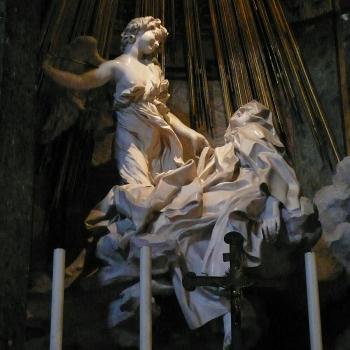Perhaps the most famous statement in the American history of eugenics is Supreme Court Justice Oliver Wendell Holmes’s one-liner upholding forced sterilization in Buck v. Bell, “Three generations of imbeciles are enough.” Carrie Buck was sterilized against her will because she, her mother, and her baby daughter were judged “feeble-minded”–though there’s no clear evidence that any woman of the Buck family was actually mentally-disabled, and some evidence that Carrie and her daughter were completely normal in mental ability–and because Carrie and her mother, who gave birth out of wedlock, were labeled “promiscuous.” (Carrie’s child was the result of rape.) Buck’s own lawyer had ties to the institution which sterilized her and the man who ordered it. The judgments pronounced against the Buck family were based on their class position, their behavior, and their helplessness, not on some kind of new science of genetics. The word “imbecile” derives from Latin and its roots literally mean “without a staff for support.” This is the only sense in which the Buck women could be considered “imbecile”: They had no help.
A century ago, people like the Bucks faced a movement which seemed destined for unstoppable success. Eugenics promised social improvement through higher birth rates for the “fit”–and sterilization for those deemed unfit. Although the eugenics movement reached out to Catholic leaders to try to neutralize Catholic opposition, they made little headway. (The lone dissenter in Buck was the only Catholic Justice.) American Catholics were reliable votes against sterilization measures and other forms of “negative eugenics,” and argued that “positive eugenics,” the promotion of marriage and family life, should not be restricted solely to those whom elites considered deserving.
Earlier this year I read Sharon M. Leon’s careful history, An Image of God: The Catholic Struggle with Eugenics. It’s a fascinating book which I’ve thought about a lot since I finished it. Both the philosophical and the structural elements which allowed Catholics to be surprisingly effective opponents of eugenics may offer some lessons for our own far more divided, and politically practically toothless, church. Some notes:
# The Buck case was more representative than unusual. One of the central Catholic arguments against forced sterilization and other “negative eugenics” practices was simply that the science didn’t prove what eugenics proponents said it proved. On one level this was an argument about how much evidence there really was for eugenic theory. On a deeper level, though, Catholic scientists and theologians gave a pointed critique of eugenic science as fundamentally shaped by bias against poor and struggling people. They opposed the idea that this kind of science was somehow neutral, pristinely cordoned off from prejudice or power relations. I’m gonna go ahead and say that they were mostly right on the science and completely correct on the philosophy of science.
# Catholic opposition to eugenics united several different strands of Catholic thought, which later political and scientific developments would unweave. One of the central figures of Leon’s book is Fr. John Ryan, nicknamed “the Right Reverend New Dealer”; a cartoon summary of his views on this subject might be, “Instead of birth control, have you tried a living wage?” Or, as Leon put it when I interviewed her, “We have the obligation to support and care for one another in ways that don’t cause bodily harm.”
Opposition to eugenics, for Catholics, meant support for material aid to poor families–both private and government aid. It meant protecting institutionalized people, and helping the people targeted by eugenicists support their families and (when moral issues were involved) improve their behavior and parenting. Catholics generally argued that family history wasn’t destiny and that people could be taught to be better parents. Catholic opposition to eugenics also meant firm statements that forced sterilization violated an individual’s right to bodily integrity. (This leg of the stool might have been the weakest, both because it can be stated in terms which make it sound like a liberal case for bodily autonomy or ownership, and because it exposed Catholics’ uncertainties about the rights of prisoners. This specific argument against forced sterilization sometimes received the qualifier that it applied only to those who had not been convicted of a crime.) And opposing eugenics expressed Catholic reverence for motherhood, childbearing, and fertility, as well as Catholic opposition to anything which would intervene in the link between sex and reproduction.
# American Catholics were surprisingly (to me) unified on this question. There’s simply no record of an American Catholic advocating eugenics on a public platform after the Church stated Her opposition in Casti connubii. Even before that clarification, American Catholics in the public square were reflexively and almost entirely against both “negative eugenics” and forms of “positive eugenics” which were restricted by race.
# This may be partly because Catholics had a large number of organizations designed to educate and unite them. Leon details the ways that parish study groups educated Catholics about eugenics, and broad-based organizations like the National Council of Catholic Men and the N.C. of Catholic Women gave voice to a constituency politicians realized they needed to consider. Some of the major Catholic organizations were based on common ethnic heritage, but in general they were based on Catholic identity or parish membership rather than forming around specific issues. Our current pro-life groups, Pax Christi, and other groups based around one issue or a collection of related issues have their benefits, perhaps including more obvious paths to ecumenism, but they may also contribute to political divisions in the Church–and to political powerlessness. You only have to listen to Pax Christi if you care what peaceniks think. Politicians in areas with substantial Catholic minorities had to listen to the National Councils regardless of their own politics.
# Catholics at this time were perfectly happy to fight on whatever grounds their opponents chose. You think you’re doing science? Let’s talk science. You think you’re good liberals? Let’s talk rights. But what fascinates me about the Catholic arguments is that Leon chose, as her book title, not a Rawlsian neutral-public-square type phrase, but the phrase, “an image of God.” This was always at the heart. It comes from the America editorial after Buck v. Bell: “Fundamentally, our objection is based on the fact that every man, even a lunatic, is an image of God, not a mere animal, that he is a human being, and not a mere social factor.”
And this phrase, “an image of God,” is what resonates today. Explicitly theological arguments often engage with our deepest longings and needs (to be beloved and to learn to love others, to be seen and to see others as in some way beautiful) because they themselves bear a beauty and poetry which carefully liberal and neutral arguments rarely attain. We should use them more often, not less.
# An argument which doesn’t appear in the Catholic rhetoric of this time is the idea that the weak show us Christ in an especial way. I asked Leon about this and she pointed out that, as in Buck, the arguments were rarely “about people who are actually developmentally disabled. So much of this conversation is about behavioral markers. It’s about alcoholism, it’s about poverty, it’s about uncleanliness, illegitimacy, promiscuity. Not congenital differences.” So the theological point that the mentally disabled can show us Christ not in spite of but through their relative weakness and helplessness didn’t come up. I suspect that argument is more necessary now, as the science has improved and we can detect more forms of disability in the womb.
# A final caution: Although the American eugenics movement lost its momentum after World War II, Catholics didn’t defeat it. The American eugenics movement was closely intertwined with the German one, and after the exposure of Nazi horrors, it was hard for eugenics to recover its once near-universal respectability. Still, women of color were forcibly sterilized here into the 1970s. American Catholic opposition to eugenics was surprisingly successful, given that Catholics were a mistrusted minority; Catholics held off the advance of eugenics in a number of states. But we weren’t surprisingly successful enough.
Phrenology chart (“Know Thyself”) via Wikimedia Commons.












